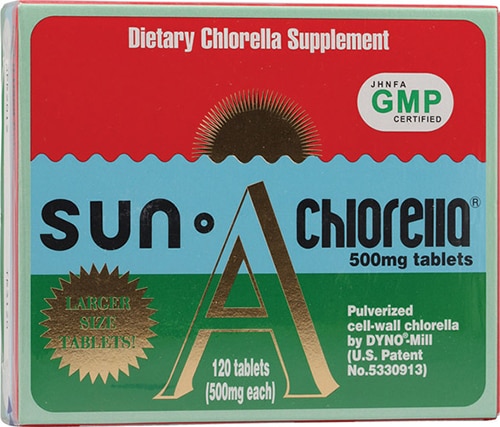Khloe Kardashian — yes, one of those Kardashians — swears by liquid chlorophyll as part of her wellness regimen. As noted by Prevention magazine, the liquid version of chlorophyll is popping up in waters, juices, smoothies, tonics, sports drinks and cocktails.
But does this Kardashian craze translate into something that you should embrace?
Some health and nutrition specialists are highly skeptical of the hype surrounding chlorophyll, particularly the liquid form.
What is chlorophyll?
According to the Micronutrient Information Center at Oregon State University’s Linus Pauling Institute, chlorophyll is the pigment that gives plants and algae their green color. Plants use chlorophyll to trap light they need for photosynthesis.
Health researcher Bart Wolbers, chief science writer at health website AlexFergus.com, says that while chlorophyll might deliver some benefits, he warns that if someone insists chlorophyll enhances stamina, decreases fatigue, fights diseases like Alzheimer’s and diabetes, or combats allergies, “they’re interpreting the currently available science too liberally.” Wolbers says there’s simply not been enough study of the effects of chlorophyll on humans to back such assertions.
Are there any chlorophyll health benefits?
However, registered dietitian Heidi Moretti, citing published research, observes that chlorophyll:
- Contains magnesium. Moretti explains that magnesium provides health benefits such as improved sleep, better heart health and greater muscle strength.
- Is full of antioxidants. These workhorses can prevent or delay certain kinds of cell damage, and might help ward off various diseases. Antioxidants include vitamins A, C and D.
- Might help fight food cravings and contribute to weight loss.†
Research also indicates chlorophyll might boost the health of your skin, might shield your skin from unsafe exposure to sunlight and might help detoxify your body, Wolbers notes.†
“The effects of chlorophyll have actually not been studied in great detail in human beings,” he says. “Future science might and almost certainly will alter the current understanding of chlorophyll.”
For now, though, there’s plenty of doubt about whether anyone should follow Khloe Kardashian’s chlorophyll routine.
Dr. Scott Schreiber, a licensed nutritionist and chiropractic physician, notes that scientific evidence fails to support popular notions about chlorophyll — that it can detox your body, promote gut health or boost immunity, for instance. And while research findings show promise when it comes to chlorophyll’s potential role in preventing cancer, he adds, it’s “hard to tell if risk is reduced by chlorophyll or other phytochemicals.”
Furthermore, Schreiber says, liquid chlorophyll and other types of commercially sold chlorophyll aren’t worth the price. Instead, chlorophyll should be derived from the food you eat, Schreiber says.
Where is chlorophyll found?
Raw vegetables that are key sources of chlorophyll include spinach, parsley, green beans, arugula, endive and sugar peas, the Micronutrient Information Center says.
Chlorella, a single-cell algae, is the richest source of chlorophyll, Morelli says. Foods like wheat grass, kale, broccoli and leafy green vegetables are brimming with chlorella.
Because natural chlorophyll isn’t as stable as chlorophyllin and is more expensive, most over-the-counter chlorophyll supplements actually contain chlorophyllin, the Micronutrient Information Center says. Chlorophyllin is a semi-synthetic mixture of water-soluble sodium copper salts derived from chlorophyll.
“Since chlorophyll hasn’t been studied extensively, there’s no established optimal dosage, or a recommended way to consume it,” according to Health magazine. “Some of the research has been conducted with compounds derived from chlorophyll, rather than the pigment in its whole form — which means the same results may or may not occur if you have chlorophyll in its natural form.”
Should you take a chlorophyll supplement?
In addition, Health magazine says, although chlorophyll supplements are considered fairly safe, some people who take them might run into issues like increased sensitivity to sunlight. Therefore, it’s best to avoid chlorophyll supplements if you’re taking medications that heighten sensitivity to sunlight, including certain antidepressants, antibiotics and antihistamines. On top of that, some users of chlorophyll supplements have reported side effects like nausea, digestive troubles and allergic reactions, according to Health.
Nonetheless, experts say it can’t hurt to try chlorophyll supplements, since they’re not toxic and otherwise don’t appear to cause severe harm, according to Shape magazine. In other words, sipping chlorophyll water likely won’t be detrimental to your health.
However, you’d be better off coupling chlorophyll water and other supplemental forms of chlorophyll with natural sources of chlorophyll to realize the most potential benefits, Shape magazine says.
†These statements have not been approved by the Food and Drug Administration. These products are not intended to diagnose, treat, cure or prevent disease.




